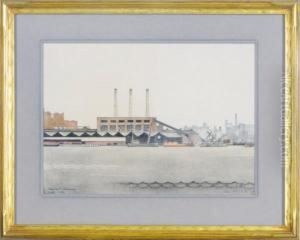Miklos Suba Paintings
Miklos Suba was a Hungarian-born artist known for his contributions to the early 20th-century art scene in Europe and the United States. Born in Budapest, Hungary, in 1880, Suba displayed a keen interest in art from an early age. He pursued his passion by studying at the Royal Academy of Fine Arts in Budapest, where he honed his skills and developed his distinct style. His early works were influenced by the prevalent art movements of the time, including Impressionism and Post-Impressionism, as well as the rich cultural heritage of his homeland.
Suba's career was shaped by the turbulent historical context of the early 1900s, including World War I and the subsequent political upheavals in Europe. In search of stability and new opportunities, he emigrated to the United States in the 1920s, settling in New York City. There, he became part of a vibrant community of émigré artists and intellectuals who contributed to the cultural melting pot of the city.
In New York, Suba's work evolved as he absorbed the influences of American art and culture. He became known for his urban landscapes and architectural paintings, capturing the dynamic energy and modernity of his adopted city with a sense of nostalgia for the European cities of his past. Suba's paintings often featured a characteristic use of bold colors and structured composition, which revealed his interest in the geometric abstraction that was gaining popularity at the time.
Suba's contributions to art were cut short by his untimely death in 1944. Despite a career that was relatively brief, his works continue to be celebrated for their unique blend of European artistic traditions and the burgeoning modernist aesthetic of the New World. Today, Miklos Suba's paintings can be found in private collections and museums, serving as a testament to the artist's talent and the rich cultural exchanges that mark the history of 20th-century art.












